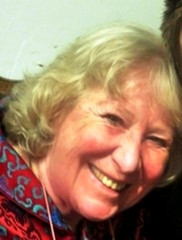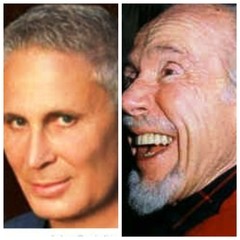|
Back
Mind-Popping Ear-Oppens-ing Excitement New York
BargeMusic
12/13/2019 -
John Corigliano: Winging It
Maurice Ravel: Valses nobles et sentimentales – La Valse
Conlon Nancarrow: Two Canons for Ursula
Ursula Oppens (Pianist)

U. Oppens (© Samuel A. Dog)
“I have no obsession with difficulty. It’s just that most of my ideas are fairly complex in the rhythmical sense, mainly tempo and rhythm. In fact, the more complex ones are literally impossible for people to play”.
Conlon Nancarrow (Interview with Bruce Duffie)
“I don’t program contemporary music with the New York Philharmonic. I program music.”
Alan Gilbert in interview
Apparently the fake news pestilence has spread to the weather reports.
With everybody reporting yesterday’s torrential rain, unhappy Friday the 13th, heavy winds and the darkness of nighttime, the weather outside BargeMusic was bright and sunny, as euphoric as the smile on Ursula Oppens before her evening hour-long infinitely-noted recital.
Ms. Oppens is, to American composers, what Homer was to the art of the epic. Commissioning endless composers, performing them without fear, interpolating the most rambunctious young stallions with the old warhorses, Ms. Oppens opens up welcoming worlds to those who previously have closed their ears.
Last night’s concert was titled “Legendary Pianists in Recital”, but legends are either moribund or never existed in the first place. Ms. Oppens is very much with us, existing with the sole aim of exciting us. Her excitement here was with two works which she premiered, and two pieces which showed her dazzling gifts.
The latter were from Maurice Ravel’s piano versions of works better known in orchestration. The first, eight Valses nobles et sentimentales, were nobly French, unsentimentally Versailles. After she had segued into the composer’s La Valse, she had transported us from the Louis XIV ballrooms (conceiving that Le Roi Soleil had waltzes) to the 1814 Council of Vienna, where the still “immoral” waltz was performed under thousand-flambeaux-lit chandeliers.
Ms. Oppens played them without affectation, without exaggeration or idiosyncrasies. Ravel himself had epigraphed the score “the delightful and ever novel pleasure of a pointless occupation”, and the pianist passed them off with their hidden harmonic complexity, with an octet of emotions fragile and swinging. In the seventh Moins vif, she offered the style of organic waltz which we heard later in La Valse. Here, Ms. Oppens planted a tentative seed, with her melody blossoming into a glamorous climax.
Without a pause came Ravel’s iconic Valse, and while Ms. Oppens stumbled a few times, Ravel himself couldn’t play his own arrangement! The previous works were written for piano. La Valse was first for orchestra, then for two-handed piano and finally for single piano.
That is hardly ever played, since it is quite unplayable. In fact, I had never heard this arrangement live, since most pianists don’t want the embarrassment of making errors in public. Ms. Oppens has none of those feelings. She gave it a lift, an exuberance, an unending rhythm. Did those digital dancers fall down with excess exuberance? No problem. Ms. Oppens’ fingers got right up without losing a beat, and continued the dance.

J. Corigliano/C. Nancarrow
The recital started and finished with pieces which the pianist had premiered, though the John Corigliano Winging It was introduced only in the three-piece completion. The composer, no professional pianist himself, had “written” them by improvising on the piano, the notes written by a friend.
The results were neither juvenile nor mature, but virtuosic bagatelles. Starting with a wickedly eccentric march and finishing with a toccata-like piece work of super virtuosity, the 32nd-notes (I imagine) raging up and down the keyboard like a Paganini legato.
Finally, Ms. Oppens made possible the impossible. The staggeringly difficult music of Conlon Nancarrow. So difficult, in fact, that until his last years, his rhythmical, contrapuntal and harmonic complexities–so complex that it made the Ravel piano arrangement of La Valse sound like a nursery rhyme–had to be played by piano rolls, stamped out by the composer himself. As well as being composed on a specially invented player piano.
In other words, Conlon Nancarrow was in the line with Harry Partch and John Cage and Lou Harrison and Henry Cowell. And, incidentally, encouraged by the Hunganian (another refugee!) Győrgy Ligeti.
Then again, the ornery Arkansas-born Mr. Nancarrow, who died in 1997 after 85 adventurous years, was more than a composer. He had been a jazz trumpeter, had fought against Franco’s Fascists in Spain, lost his citizenship, became a Mexican citizen, won a MacArthur Grant, and–as a student of Sessions, Piston and Slominsky–kept on punching out those strange notations.
When hearing Ms. Oppens, obviously he apparently had to admit that no pianist previous to her could execute his notes. Thus, he was tempted, seduced, whatever the hell you want to call it, to write something for her.
And while Two Canons has an easy title, the rhythmic juxtapositions would make any pianist run for cover. And any attentive listener as well. Thus, after the recital, I felt it my duty to reprimand Ms. Oppens for making me almost fall out of my seat into the BargeMusic aisle.
That was for Canon Number One. In a brief introduction, Ms. Oppens gave us a clue. The right hand, she said, would perform seven notes–for every five notes in the left hand.
Okay. Sounds simple. Especially since the left hand started solo and even I can count up to five. That, though, was when the right hand started quickly playing seven notes against the left hand. And faster. And that’s when my brain synapses started knocking and tumbling against each other.
Which didn’t stop Ms. Oppens who whopped into some fortissimo chords which weren’t exactly chords since that same deranged juxtaposition was occurring along with the canon, and along with an ending where the right hand seemed to invert the left hand.
If that knocked out the more sensitive listeners at BargeMusic, it didn’t faze Ms. Oppens who launched into another Nancarrow Canon where speeds changed, ratios became irrational, and at the end...
Well by the end, we had been to a ten-finger ten-minute Big Apple Circus. Had Ms. Oppens played an encore, it would have un-upset an apple-cart, which was bouncing fruits in our brain. But she is–have I mentioned this?–an artist. She dun what she had to do. br />
And while the ten-minute walk to the subway was supposedly filled with rain, one could only feel Ms. Oppens’ waves of sunshine and the scintillating particles of the night.
Harry Rolnick
|